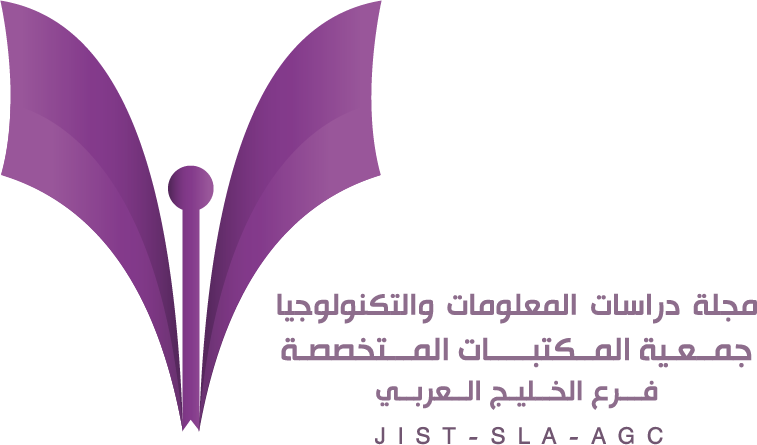-
oa واقع إدارة الكوارث بدوائر الوثائق في المؤسسات الحكومية بسلطنة عمان في ظل المبادئ التوجيهية لإدارة الكوارث
- Source: Journal of Information Studies & Technology (JIS&T), Volume 2022, Issue 1, Mar 2022,
-
- 25 February 2021
- 31 March 2021
- 31 March 2022
Abstract
ملخص
شرعت معظم الدوائر الحكومية في سلطنة عمان في اعتماد أنظمة عصرية لإدارة وثائقها. ويوجه المجلس الدولي للأرشيف مراكز الوثائق والمؤسسات الأرشيفية بأن يكون لديها خطط وسياسات استراتيجية للحد من تأثير الكوارث على الوثائق. تسعى هذه الدراسة لرصد واقع إدارة الكوارث ومراقبتها في دوائر الوثائق بالمؤسسات العمانية، ومدى توافقها مع المبادئ التوجيهية للمجلس الدولي للأرشيف (ICA_Study11) حول الوقاية من الكوارث ومراقبتها، والضوابط التي اعتمدتها هيئة الوثائق والمحفوظات الوطنية. اعتمدت الدراسة المنهج الكمي لتحقيق أهدافها البحثية؛ إذ اُستُخدمت استمارة المراجعة لجمع البيانات المطلوبة من عينة الدراسة المكونة من (11) دائرة للوثائق بالمؤسسات الحكومية. توصلت الدراسة إلى عدة نتائج، أهمها: بلغت نسبة توافق ممارسات إدارة الكوارث في دوائر الوثائق مع المبادئ التوجيهية للوقاية من الكوارث ومراقبتها (34.4%)، إذ لا تتوفر خطة لإدارة الكوارث وقائمة بالمصادر المحتملة للأخطار في أغلب دوائر الوثائق، بالإضافة إلى عدم تخصيص بنود مالية لتغطية نفقات إدارة الكوارث بهذه الدوائر. كما افتقرت أغلب الدوائر إلى تحديد أماكن يمكن استعمالها كمناطق بديلة للحفظ المؤقت أثناء الكوارث بالمؤسسات المشرفة عليها. كما لم تتوفر لدى بعض الدوائر العديد من نظم وتجهيزات الوقاية من الكوارث ومكافحتها كنظم إطفاء الحرائق بالغاز. ختاماً، خرجت الدراسة بجملة من التوصيات، أبرزها: ضرورة قيام هيئة الوثائق والمحفوظات الوطنية بإصدار دليل توجيهي عام لإدارة الكوارث بدوائر الوثائق، وقيام كل مؤسسة بوضع خطة متكاملة لإدارة الكوارث تراعي فيها متطلبات دائرة الوثائق لديها، وتخصيص بنود مالية ضمن الموازنة العامة للمؤسسة الأم لتغطية نفقات إدارة الكوارث بدوائر الوثائق، وتوفير ما افتقرت إليه بعض الدوائر من نظم وتجهيزات للوقاية من الكوارث ومكافحتها.
Most of the government records departments in the Sultanate of Oman have embarked on adopting modern systems for managing their records. The International Council of Archives directs records centers and archival institutions to set strategic plans and policies to reduce the impact of disasters on records and archives. Objective: This study seeks to explore the reality of disaster management in the records departments of the Omani institutions; and how they comply with the disaster prevention and control guidelines introduced by the International Council of Archives (ICA_Study11) and the controls set by the Omani National Records and Archives Authority in this regard.
Method: Checklist form was used to collect the required data from a study sample of (11) records departments of Omani governmental institutions. Results: The most important findings were: the percentage of disaster management practices in records departments conforming to the guidelines on disaster prevention and control was (34.4%), as there was no disaster management plan and a list of possible sources of hazards in most records departments. In addition, most of the institutions did not allocate financial budget to cover disaster management expenses in their documents departments. Also, most of these departments did not have (in their parent institutions) places that could be used as alternative areas for temporary storage during disasters. Moreover, some of these departments did not have many systems and equipment for disaster prevention and control, such as gas fire extinguishing systems. Recommendations: Issue a general guidelines on disaster management for records departments by the National Records and Archives Authority; each institution to prepare an integrated disaster management plan while considering its documentmanagement requirements; allocate financial items within the general budget of the parent institution to cover management disasters expenses in records departments; and provide these departments with the systems and equipment they lack in disaster prevention and control.


